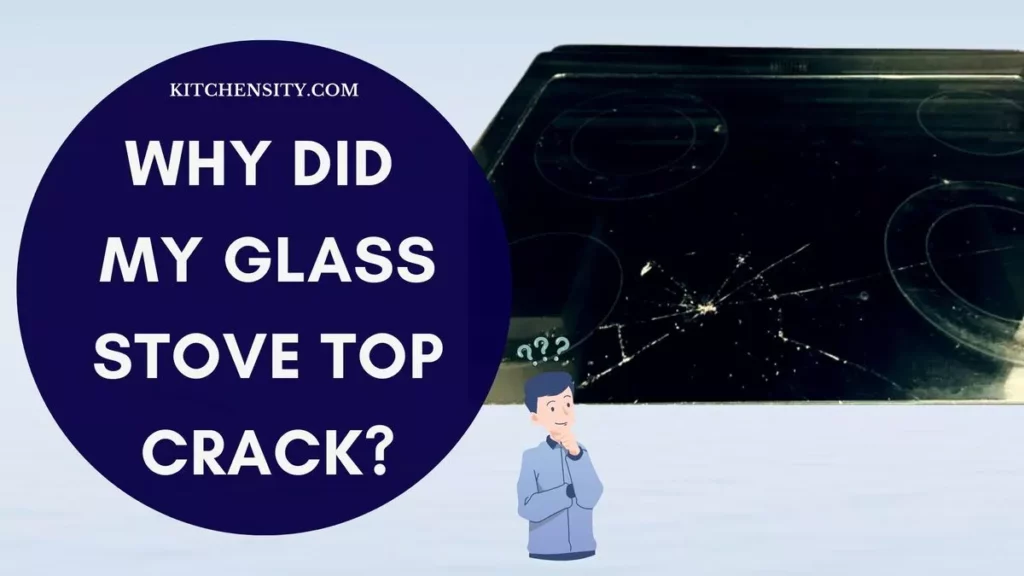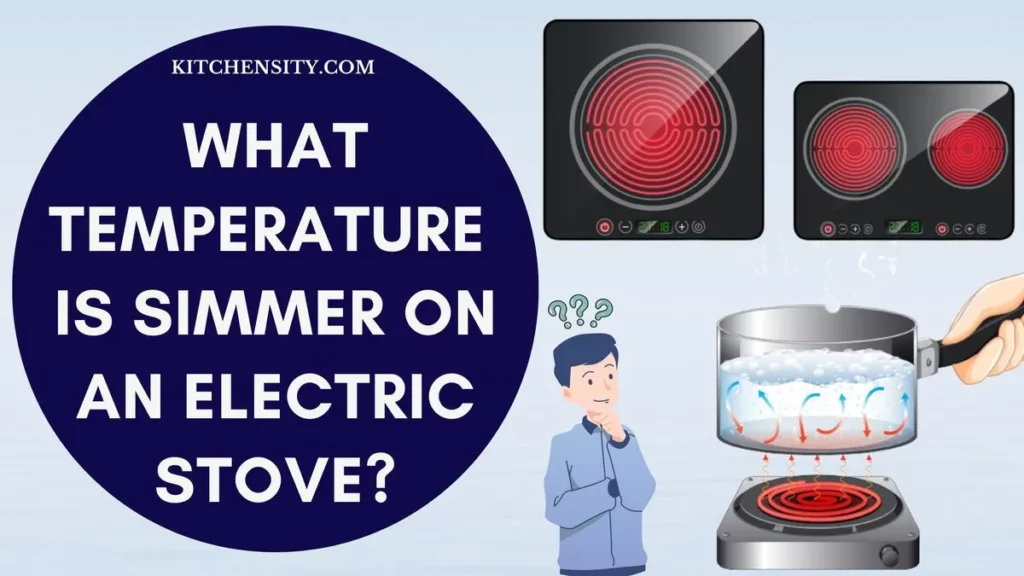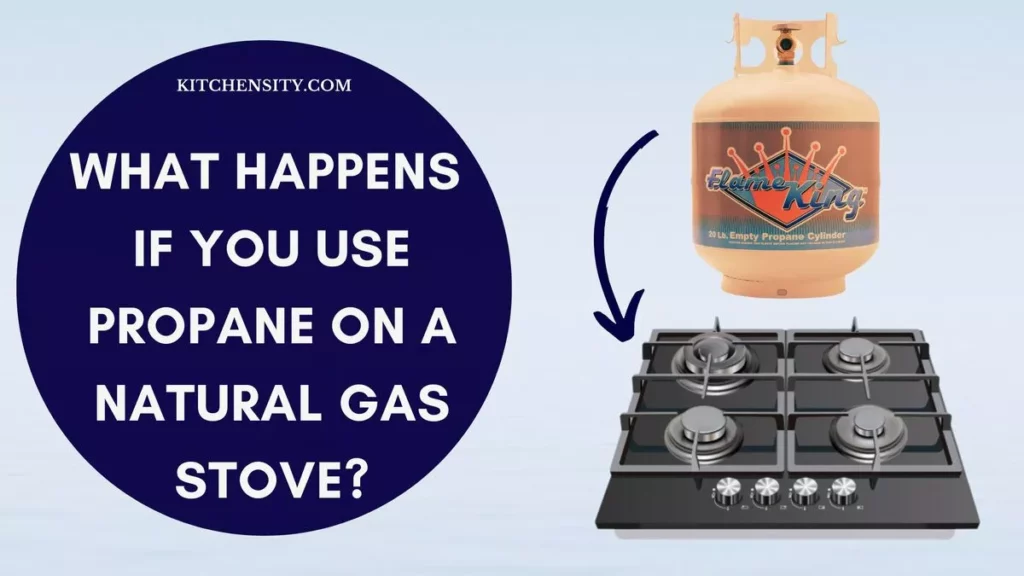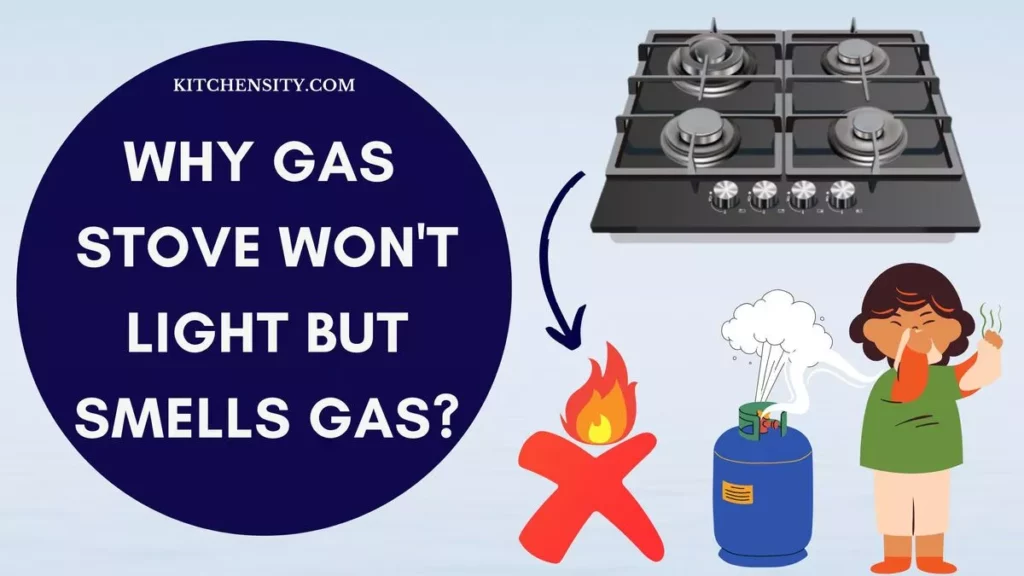In modern kitchens, glass stove tops have become popular due to their sleek appearance and ease of cleaning.
However, it can be frustrating and concerning when your glass stove top suddenly cracks. This unexpected issue often leaves homeowners puzzled, wondering what could have caused it.
In this article, we will explore the various reasons why glass stove tops crack, how to prevent it from happening, and, if possible, how to fix this.

Table of Contents
- 1 Why Did My Glass Stove Top Crack?
- 1.1 1. Thermal Stress: The Culprit Behind Most Cracks
- 1.2 2. Impact Damage: Accidental Hits And Heavy Objects
- 1.3 3. Manufacturing Defects: Quality Matters
- 1.4 4. Uneven Weight Distribution: Unequal Pressure On The Surface
- 1.5 5. Poor Installation: Importance Of Professional Setup
- 1.6 6. Wear And Tear: Age-Related Cracks
- 2 What Can Ruin A Glass Top Stove?
- 3 Can I Use My Cracked Glass Top Stove?
- 4 How To Fix A Cracked Glass Top Stove?
- 5 Cracked Glass Stove Top Repair Cost In The USA
- 6 Cracked Glass Stove Top Replacement
- 7 What Happens If Have A Hairline Crack In Glass Cooktop?
- 8 How To Prevent Cracks And Damage Of Glass Cooktop?
- 9 Final Thoughts: Why Did My Glass Stove Top Crack?
- 10 Frequently Asked Questions (FAQs)
- 10.1 Does Glass Stove Top Cracked From Heat?
- 10.2 Can I Still Use My Cracked Glass Stove Top?
- 10.3 Can I Repair A Cracked Glass Stove Top Myself?
- 10.4 How Often Should I Inspect My Glass Stove Top For Damages?
- 10.5 Are Glass Stove Tops Energy-Efficient?
- 10.6 What Are The Alternatives To Glass Stove Tops?
Why Did My Glass Stove Top Crack?
Your glass stove top may have cracked due to thermal stress caused by sudden temperature changes, impact damage from heavy objects, manufacturing defects, uneven weight distribution, or poor installation.
Wear and tear over time, along with the use of improper cookware, can also weaken the glass, leading to cracks. Understanding these factors and adopting preventive measures can help avoid such issues and ensure the longevity of your glass stove top.
Also Read – Do Gas Stoves Have Pilot Lights?
Your glass stove top cracked due to these factors:
1. Thermal Stress: The Culprit Behind Most Cracks
One of the primary reasons for glass stove top cracks is thermal stress. Rapid temperature changes, such as placing a hot pot directly on a cold stovetop or accidentally spilling cold water on a hot surface, can create stress points on the glass. Over time, these stress points weaken the glass, leading to cracks.
To prevent thermal stress, allow your glass stove top to cool gradually. Use trivets or heat-resistant pads to place hot pots and pans. Avoid sudden temperature fluctuations by refraining from placing frozen items directly on the stovetop.
2. Impact Damage: Accidental Hits And Heavy Objects
Glass stove tops are vulnerable to cracks and chips if heavy objects are accidentally dropped on them or if cookware is banged against the surface forcefully. Even small impacts can weaken the glass over time, leading to larger cracks over time.
Therefore, users need to be mindful of their movements in the kitchen, ensuring that utensils and cookware are placed gently on the stovetop to avoid any accidental impacts that could result in damage.
3. Manufacturing Defects: Quality Matters
Manufacturing defects can significantly contribute to the cracking of glass stove tops. When these appliances are produced, various intricate processes are involved in shaping and tempering the glass. However, if there is a flaw in the manufacturing process, it can weaken the structural integrity of the glass surface.
These defects might not be immediately visible to the naked eye, making it challenging for consumers to detect them upon initial inspection. Over time, with regular use and exposure to heat, these hidden defects can manifest as cracks. It could be a microscopic imperfection in the glass composition, an uneven distribution of materials, or a fault in the tempering process.
Therefore, opting for a high-quality glass stove top reduces the likelihood of encountering issues related to manufacturing defects, providing homeowners with a durable and reliable kitchen appliance that is less prone to cracks and damages over time.
Also Read – How To Fix A Pilot Light On A Gas Stove?
4. Uneven Weight Distribution: Unequal Pressure On The Surface
Uneven weight distribution on a glass stove top can lead to cracks due to unequal pressure on the surface. When heavy cookware or objects are placed unevenly, specific areas of the glass bear more weight than others. This uneven pressure creates stress points, weakening the glass over time.
The glass used in stove tops is strong, but it is not invincible. If the weight of pots, pans, or other objects is concentrated on one area of the stove, it can exceed the glass’s tolerance level. This excess pressure weakens the glass at those specific points, making it susceptible to cracking.
To prevent this, it’s crucial to use flat-bottomed cookware that evenly distributes the weight across the stove top surface. Additionally, rotating the placement of your pots and pans can help distribute wear and tear more evenly.
5. Poor Installation: Importance Of Professional Setup
Improper installation, where the stove top isn’t adequately supported or leveled, can lead to stress points. These stress points weaken the glass, making it susceptible to cracks. It’s crucial to have your glass stove top installed by professionals to ensure even weight distribution and proper support.
Professional installation is crucial because certified technicians are trained to ensure that the stovetop is properly supported, level, and securely fitted. They have the expertise to distribute the weight of the stove top evenly, eliminating potential stress points. A well-installed stove top provides a stable foundation for the glass, reducing the risk of cracks caused by uneven pressure.
Also Read – What Is An Infrared Gas Stove?
6. Wear And Tear: Age-Related Cracks
Wear and tear are natural processes that all appliances, including glass stove tops, undergo over time. As glass stove tops are repeatedly exposed to high temperatures, the expansion and contraction that occur during heating and cooling cycles gradually weaken the glass. This continual thermal stress, combined with regular cleaning and daily use, leads to the surface becoming more vulnerable to cracks, especially as the stove top ages.
Age-related cracks occur due to the accumulated impact of years of cooking, cleaning, and exposure to varying temperatures. The glass, once strong and resilient, begins to lose its structural integrity over time.
Regular maintenance, such as gentle cleaning using appropriate materials and techniques, can delay the onset of age-related cracks. However, homeowners need to be aware that, regardless of maintenance efforts, glass stove tops have a limited lifespan. As they age, the risk of cracks and other issues increases. Therefore, being vigilant about inspecting the stove top for signs of wear and considering timely replacements can prevent potential safety hazards and ensure a seamless cooking experience.
Also Read – How To Clean An Infrared Gas Stove?
What Can Ruin A Glass Top Stove?
Glass top stoves, while sleek and efficient, require careful handling and maintenance to prevent damage. Several factors can potentially ruin a glass-top stove:
- Heavy Or Rough Cookware: Using heavy or rough-bottomed cookware, especially those made of cast iron, can scratch the glass surface. These scratches can lead to further damage over time.
- Sliding Cookware: Avoid sliding pots and pans across the surface as it can cause scratches and may even result in cracks if done forcefully.
- Incorrect Cookware: Using cookware that is not flat-bottomed can create uneven contact with the glass, leading to hot spots and potential damage.
- Abrasive Cleaners: Harsh or abrasive cleaners, scrub brushes, or cleaning pads can scratch the glass. It’s important to use gentle, non-abrasive cleaners and soft materials for cleaning.
- Sugar And Spills: Sugary spills, if not cleaned promptly, can melt and adhere to the glass surface. This can be challenging to remove and might cause permanent marks on the stove.
- Cooking With Dirty Cookware: If there are food particles or residues on the bottom of your cookware, they can burn onto the stove surface, causing stains and potentially damaging the glass.
- Dropping Heavy Objects: Dropping heavy objects or utensils onto the glass can cause cracks or outright shattering, rendering the stove unusable.
- Sudden Temperature Changes: Placing hot cookware on a cold stove or vice versa can cause thermal shock, leading to cracks. It’s essential to let both the stove and cookware adjust to room temperature before using them together.
- Incorrect Installation: Poor installation or an uneven supporting surface can stress the glass unevenly, making it susceptible to cracks over time.
- Not Using Proper Cookware: Induction-compatible cookware is essential for induction glass top stoves. Using non-compatible cookware will not only affect cooking efficiency but may also damage the stove.
- Cooking With Excessive Force: Using excessive force when stirring or cooking can lead to impacts on the glass surface, potentially causing cracks or scratches.
To ensure the longevity of a glass top stove, it’s crucial to use appropriate cookware, clean it regularly with gentle materials, handle cookware carefully, and be mindful of sudden temperature changes and impact forces.
Also Read – My Gas Stove Making Noise When Off
Can I Use My Cracked Glass Top Stove?
Using a cracked glass top stove is not recommended and can be dangerous. Cracks in the glass surface weaken its structural integrity, making it vulnerable to further damage. Here’s why you should avoid using a cracked glass top stove:
- Safety Hazard: A cracked stove top poses a safety risk. The cracks can expand, especially when exposed to heat, leading to potential shattering. This can cause injuries, burns, or electrical hazards.
- Uneven Heating: Cracks can disrupt the even distribution of heat. This inconsistency in heating can affect cooking results and may lead to unevenly cooked food, making it challenging to prepare meals properly.
- Difficulty in Cleaning: Cracks can trap food particles and spills, making it difficult to clean the stove thoroughly. Residue accumulation in the cracks can affect the stove’s performance and hygiene.
- Electrical Issues: If the cracks extend to the electrical components beneath the glass, it can result in electrical malfunctions, posing a risk of fire or other electrical hazards.
- Further Damage: Continued use of a cracked stove top can worsen the damage. What might start as a small crack could expand with regular use, eventually rendering the stove unusable.
Considering these risks, it is strongly advised to refrain from using a cracked glass top stove. Instead, prioritize your safety and invest in repairing the stove or replacing it altogether. Contact a professional technician to assess the damage and provide appropriate solutions.
Remember, your safety and the safety of your household members should always be the top priority when dealing with any home appliances.
Also Read – How To Fix The Gas Stove Igniter Not Sparking After Cleaning?
How To Fix A Cracked Glass Top Stove?
Fixing a cracked glass top stove requires caution and precision. While minor scratches can sometimes be repaired, significant cracks may require professional assistance or even a replacement. Here’s a step-by-step process for attempting to fix minor cracks:
Materials Needed
- Glass stove top filler kit
- Safety gloves
- Safety goggles
- Clean, lint-free cloth
- Razor blade or glass scraper
- Mild glass cleaner
- Fine-grit sandpaper (if included in the repair kit)
- Heat-resistant epoxy (if included in the repair kit)
- Plastic wrap
- Hairdryer or heat gun
- Soft cloth
Step 1: Safety First
Ensuring safety is paramount when attempting to repair a cracked glass-top stove. Here are essential safety precautions to follow before starting the repair process:
- Wear Safety Gear:
- Put on safety gloves made of durable material to protect your hands from sharp edges and potential glass splinters.
- Wear safety goggles to shield your eyes from any glass fragments that might dislodge during the repair.
- Choose A Well-Ventilated Area: Perform the repair in a well-ventilated space to disperse any fumes that might be emitted from cleaning agents or repair materials. Proper ventilation prevents inhalation of harmful substances.
- Gather Necessary Tools And Materials: Gather all the tools and materials needed for the repair, including the glass stove top repair kit, clean lint-free cloths, razor blade or glass scraper, mild glass cleaner, plastic wrap, and a hairdryer or heat gun if required. Having everything ready minimizes the risk of accidents while searching for tools.
- Turn Off The Power: Ensure that the stove is completely powered off and disconnected from electricity or gas sources. This prevents accidental activation during the repair process, reducing the risk of electric shocks or burns.
- Work On A Stable Surface: Place the stovetop on a stable and secure surface to avoid accidental tipping or falling. A stable surface ensures you can work comfortably and safely.
- Keep First Aid Kit Handy: Have a basic first aid kit nearby, containing essentials like bandages, antiseptic ointment, and sterile gauze pads, in case of minor injuries.
- Follow Repair Kit Instructions: Carefully read and understand the instructions provided in the glass stove top repair kit. Different repair kits may have specific guidelines and safety precautions tailored to their contents.
Also Read – Why Is My Gas Stove Not Clicking?
Step 2: Assess The Damage
Before initiating any repair, it’s crucial to assess the extent of the damage to your glass top stove. Here’s how to assess the damage effectively:
- Visual Inspection: Carefully examine the cracked area. Note the length, depth, and location of the crack. Assess if it’s a surface-level crack or if it extends deeper into the glass. Understanding the specifics of the damage will help you determine the appropriate repair method.
- Probe The Crack: Gently run your fingertip along the cracked area. If you feel any sharp edges or loose glass particles, it indicates that the crack might be unstable. Take note of any loose fragments, as they will need to be removed before the repair.
- Check For Stability: Tap lightly around the cracked region with a wooden or plastic tool. If you hear a dull sound, it indicates stability. However, if you hear a rattling sound, there might be loose glass. In such cases, avoid further pressure on the area to prevent exacerbating the damage.
- Evaluate The Crack’s Impact: Determine if the crack affects the functionality of the stove. Assess if the damaged area interferes with the placement of cookware or compromises the stove’s structural integrity. Understanding the impact of the crack on usability will help you decide whether a repair is feasible or if a replacement might be necessary.
- Document The Damage: Take clear photographs of the cracked area from different angles. These photographs can serve as valuable references, especially if you need to consult a professional technician or contact customer support for assistance.
- Consider Professional Inspection: If you are uncertain about the severity of the damage or if the crack is extensive, consider seeking professional help. A technician can provide a detailed assessment and recommend the most suitable repair or replacement options.
Also Read – Why Gas Stove Won’t Light But Smells Gas?
Step 3: Prepare The Crack For Repair
Preparing the crack properly is essential to ensure that the repair adheres effectively and results in a seamless fix. Here’s how to prepare the cracked glass top stove for repair:
- Clean The Cracked Area: Use a clean, lint-free cloth and mild glass cleaner to thoroughly clean the cracked surface. Remove any grease, dirt, or residue. Cleaning ensures that the repair material adheres properly to the glass.
- Inspect The Crack: Carefully examine the crack to determine its depth and length. This inspection helps you understand the extent of the damage and plan the repair accordingly.
- Level The Surface: Use a razor blade or a glass scraper to gently level the cracked area. Be cautious and gentle to avoid widening the crack. Removing loose glass particles ensures a smooth surface for the repair material to adhere to.
- Assess The Stability: Check if the cracked glass is stable or if there are any loose fragments. If you find any loose pieces, carefully remove them using the razor blade or glass scraper. Stabilizing the cracked area prevents further damage during the repair process.
- Sand The Surface (If Included In The Repair Kit): If your glass stove top repair kit includes fine-grit sandpaper, follow the kit’s instructions to sand the cracked area gently. Sanding helps create a slightly rough surface, allowing the repair material to bond more effectively.
Also Read – How To Fix A Yellow Flame On A Gas Stove?
Step 4: Apply The Filler
Applying the filler is a crucial step in repairing a cracked glass top stove. Here’s how to do it effectively:
- Read The Instructions: Begin by carefully reading the instructions provided with the glass stove top filler kit. Different kits might have specific application methods and drying times. Understanding the manufacturer’s guidelines is essential for a successful repair.
- Prepare The Filler: Prepare the filler mixture according to the kit instructions. This typically involves mixing the components provided in the kit. Use the specified proportions and mix thoroughly to ensure a homogenous mixture.
- Apply The Filler To The Crack: Using a small spatula or the applicator provided in the kit, gently apply the filler to the crack. Ensure that the filler fills the crack completely and evenly. Work carefully to avoid excess filler spilling over the edges of the crack.
- Smooth Out The Surface: After filling the crack, use the spatula or a flat tool to level the filler with the surface of the glass stove top. Ensure that the filled area is flush with the surrounding glass, creating a seamless finish.
- Remove Excess Filler: While the filler is still pliable, use a razor blade or a sharp knife to carefully remove any excess filler from the surrounding area. Be precise to create a neat and uniform appearance.
- Let The Filler Cure: Allow the filler to cure as per the kit’s instructions. This often involves letting it air dry for a specific duration. Avoid placing any objects or applying pressure on the repaired area during the curing process.
- Polish The Repaired Area: Once the filler has completely cured, use a soft cloth to gently polish the repaired area. This helps blend the repaired section with the rest of the glass surface, ensuring a smooth and polished look.
- Test The Repair: After the repair is complete, carefully test the stove to ensure that it functions correctly. Monitor the repaired area for any signs of instability or further cracking during use.
Also Read – Orange Flame On The Gas Stove: Causes And Fixes
Step 5: Heat And Cure
After applying the filler to the cracked glass top stove, it’s crucial to properly heat and cure the repair to ensure its durability and effectiveness. Here’s how to heat and cure the repaired area:
- Cover The Repair: Place a piece of plastic wrap or cling film over the repaired area. This covering ensures that the filler remains undisturbed during the curing process. Press the plastic wrap gently to remove any air bubbles.
- Apply Heat: Use a hair dryer or heat gun on a low to medium setting to gently apply heat to the plastic-covered repair. Keep the heat source at least 6-8 inches away from the surface to avoid overheating or damaging the repair. Move the heat source evenly across the repaired area for uniform heating.
- Follow Kit Instructions: Refer to the specific instructions provided in the repair kit. Different kits may have varying curing times and temperature requirements. It’s essential to adhere to the guidelines outlined in the kit to ensure proper curing.
- Observe The Filler: While applying heat, observe the filler through the plastic wrap. As it heats up, it should become more transparent, indicating that it’s properly curing and bonding with the glass surface. Be patient during this process; rushing it might compromise the repair.
- Allow Sufficient Curing Time: After applying heat, let the repair cure for the recommended duration specified in the kit instructions. Curing times typically range from a few hours to a full day. Avoid placing any objects on the repaired area during this period.
- Remove Plastic Wrap: Once the curing time is complete, carefully remove the plastic wrap. Check the repaired area for firmness and ensure that the filler has hardened completely. If the filler feels solid and secure, the repair is likely successful.
- Conduct A Final Inspection: Inspect the repaired area closely. Ensure that the filler is level with the surrounding glass surface and that there are no visible imperfections. If you are satisfied with the repair, proceed with the final touches, such as removing excess filler and polishing the surface.
Proper heating and curing are critical to the longevity of the repair. By following these steps and the kit instructions diligently, you can achieve a strong and durable bond, restoring the integrity of your glass top stove.
Also Read – Why Electric Stoves Take Forever To Boil Water?
Step 6: Final Touches
After the repaired area has been properly heated and cured, it’s time to add the final touches to ensure a seamless and polished finish. Here’s how to complete the repair process with finesse:
- Remove Excess Filler: Carefully inspect the repaired area for any excess filler that might have spread beyond the crack. Use a razor blade or a glass scraper to gently remove any surplus filler. Be meticulous to create a smooth and level surface.
- Polish The Repaired Area: Use a soft, clean cloth to polish the repaired section gently. Buff the surface in circular motions to blend the repaired area with the rest of the glass stove top. Polishing enhances the appearance and ensures a uniform finish.
- Clean The Entire Stove Top: Clean the entire glass stove top with a mild glass cleaner and a soft cloth. Ensure the repaired area is thoroughly cleaned to remove any residue from the repair process. A clean surface adds to the overall aesthetic appeal.
- Inspect The Repair: Conduct a final inspection of the repaired area. Check for smoothness, evenness, and transparency of the filler. Also, verify that the repaired section is securely bonded and leveled with the surrounding glass surface.
- Test The Stove: Turn on the stove and test the repaired area. Confirm that there are no unusual sounds, smells, or signs of instability during the operation. Testing ensures that the repair can withstand the heat and stress of regular stove usage.
- Document The Repair: Take photographs of the repaired area from various angles. These photographs serve as documentation, useful for future reference in case of further issues or when consulting professionals.
- Exercise Caution: Even after the repair, continue to handle cookware and utensils with care. Avoid dropping heavy objects or using excessive force on the repaired area to prevent potential damage in the future.
Completing these final touches not only enhances the repaired area’s appearance but also ensures that the repair is well-integrated into the overall design of the glass stove top. A meticulous approach guarantees a professional-looking and long-lasting solution to the cracked glass top stove, restoring both functionality and aesthetics.
Also Read – How Hot Do Electric Stove Burners Get?
Step 7: Test The Stove
Testing the stove after a repair is a critical step to ensure the effectiveness and safety of the repair work. Here’s how to test the stove after fixing a cracked glass top:
- Power On The Stove: Turn on the stove using the control panel or knobs. Observe the display or indicator lights to ensure the power supply is active.
- Monitor The Repaired Area: Pay close attention to the repaired section of the glass top. Watch for any unusual sounds, such as cracking or popping noises, which could indicate instability in the repair. Also, check for visible signs of stress, like new cracks forming or the filler material shifting.
- Observe Heating Patterns: Place a flat-bottomed pan or pot on the repaired area and turn on the corresponding burner. Observe the heating pattern. Ensure the repaired area heats up uniformly without any hot spots or irregularities. Uneven heating could suggest issues with the repair or the stove’s functionality.
- Conduct Cooking Tests: Prepare a simple recipe using the repaired burner. Cook something that requires different heat levels, such as boiling water and simmering. This allows you to assess the stove’s performance during typical cooking tasks.
- Check Control Functions: Test all control functions, including adjusting heat levels and turning burners on and off. Verify that the repaired burner responds correctly to control adjustments and functions seamlessly with the rest of the stove.
- Verify Safety Features: If your stove has safety features like auto-shutoff or overheating protection, verify that these functions are working correctly. This ensures that the repaired stove operates safely and prevents potential hazards.
- Monitor For Smells And Smoke: While testing, be vigilant for any unusual odors or smoke. If you detect a strange smell or see smoke emanating from the repaired area, immediately turn off the stove and disconnect it from the power source. These signs could indicate a problem with the repair or an electrical issue.
- Test Multiple Times: Conduct the testing process multiple times, especially if you’ve repaired a significant crack. Repetitive testing ensures the stability and longevity of the repair, providing confidence in the stove’s continued safe operation.
Remember, this step-by-step process is suitable for minor surface-level cracks. For larger or deeper cracks, it’s advisable to seek professional assistance. Additionally, always follow the specific instructions provided in the glass stove top filler kit you’re using for the best results.
Also Read – Gas Stove Leaking Gas From Burner
Cracked Glass Stove Top Repair Cost In The USA
The cost to repair a cracked glass stove top in the USA ranges from $150 to $600. The exact cost will depend on several factors, including:
- The size and severity of the crack
- The make and model of your stove
- The cost of labor in your area
If the crack is small and localized, it may be possible to repair it with a special epoxy or sealant. However, if the crack is large or extends across multiple areas of the stovetop, it will need to be replaced.
The cost of a replacement stove top will vary depending on the make and model of your stove. Some brands and models are more expensive than others. You can expect to pay between $200 and $800 for a new glass stove top.
In addition to the cost of the stovetop, you will also need to pay for labor. The cost of labor will vary depending on your location. In general, you can expect to pay between $100 and $200 for a professional to install a new stovetop.
Here are some tips for saving money on cracked glass stove top repair:
- If the crack is small, you may be able to repair it yourself with a special epoxy or sealant. These kits are available at most home improvement stores.
- If you need to replace the stove top, try to find a deal on a refurbished model. Refurbished stove tops are often sold at a significant discount compared to new models.
- Ask multiple repair companies for quotes before you choose one. This will help you ensure that you are getting the best possible price.
It is important to note that it is not safe to use a cracked glass stove top. Even minor cracks can increase the risk of electrocution or other hazards. If your stovetop is cracked, it is important to have it repaired or replaced as soon as possible.
Also Read – Why Gas Stove Won’t Light But Smells Gas?
Cracked Glass Stove Top Replacement
Replacing a cracked glass stove top is a relatively straightforward process, but it is important to follow the instructions carefully to avoid damaging your stove or yourself.
Here are the steps on how to replace a cracked glass stove top:
- Unplug the stove from the power outlet.
- Remove the screws that secure the stovetop to the counter.
- Carefully lift the stove top off the counter.
- Place the stovetop on a flat, soft surface.
- Clean the underside of the stovetop to remove any debris.
- Apply a thin bead of silicone sealant to the perimeter of the new stovetop.
- Carefully position the new stove top on the counter and align the holes for the screws.
- Secure the stovetop to the counter with the screws.
- Plug the stove back into the power outlet.
Here are some tips for replacing a cracked glass stove top:
- Make sure that the new stove top is the correct size and model for your stove. You can find this information in the owner’s manual for your stove.
- Be careful not to overtighten the screws when securing the new stove top to the counter. This can damage the stovetop.
- Use silicone sealant to create a watertight seal around the perimeter of the new stovetop. This will help to prevent leaks and damage to the counter.
- If you are not comfortable replacing the stovetop yourself, you can hire a professional appliance repair technician to do it for you.
Cost of replacing a cracked glass stove top:
The cost of replacing a cracked glass stove top ranges from $150 to $800. The exact cost will depend on the make and model of your stove, as well as the cost of labor in your area.
Safety tips:
- Always unplug the stove from the power outlet before attempting to replace the stovetop.
- Be careful not to cut yourself on the broken glass. Wear gloves and safety glasses when handling the broken stovetop.
- Dispose of the broken stove top properly. You can take it to a local appliance recycling center or hazardous waste disposal facility.
Also Read – Do Gas Stoves Need To Be Vented?
What Happens If Have A Hairline Crack In Glass Cooktop?
A hairline crack in a glass cooktop may seem insignificant, but it can pose several potential hazards. Here’s what you need to know about the risks associated with a hairline crack in your glass cooktop:
- Structural Weakness: A hairline crack compromises the structural integrity of the glass cooktop, making it more susceptible to further damage. The crack can propagate and expand with repeated heating and cooling cycles, eventually leading to a complete breakage of the cooktop.
- Electrical Hazards: In electric cooktops, the presence of a crack can increase the risk of electrical shock or short circuits. Moisture or spills can seep into the crack and come into contact with electrical components, potentially causing electrical malfunctions or posing a shock hazard.
- Gas Leakage: For gas cooktops, a crack can allow gas to escape, creating a potential fire or explosion hazard. Even a small crack can compromise the seal around the burner, allowing gas to leak out and accumulate in the surrounding area.
- Impaired Cooking Performance: A cracked cooktop may not distribute heat evenly, leading to uneven cooking and potential hot spots. This can affect the quality of your cooking and make it difficult to control the cooking process.
- Aesthetic Concerns: A hairline crack, even if it doesn’t pose an immediate safety risk, can detract from the overall appearance of your cooktop. The crack may become more noticeable over time, affecting the visual appeal of your kitchen.
In general, it is not advisable to continue using a cooktop with a hairline crack. The risks associated with the crack outweigh the benefits of using the cooktop in its compromised state. It is recommended to have the crack repaired or the cooktop replaced to ensure safety and optimal cooking performance.
Also Read – How To Convert A Natural Gas Stove To Propane?
How To Prevent Cracks And Damage Of Glass Cooktop?
Preventing cracks and damage to your glass top stove involves careful usage, regular maintenance, and adopting good kitchen practices. Here are effective ways to prevent cracks and damage:
- Use Proper Cookware: Choose cookware with flat, smooth bottoms made from materials compatible with glass top stoves, such as stainless steel, aluminum, or copper. Avoid rough or cast iron cookware, as they can scratch the glass surface.
- Lift, Don’t Slide: Lift pots and pans instead of sliding them across the stove surface. Sliding heavy or rough-bottomed cookware can scratch or damage the glass.
- Avoid Impact: Be gentle when placing cookware on the stove. Avoid dropping or banging pots and pans, as impacts can weaken the glass and lead to cracks.
- Choose The Right Utensils: Use utensils made from non-abrasive materials, such as wood, plastic, or silicone. Metal utensils can scratch the glass, causing damage over time.
- Clean Regularly: Clean spills and residues promptly to prevent them from hardening and becoming difficult to remove. Use a soft, damp cloth or sponge with mild dish soap to clean the stove after it has cooled down.
- Avoid Sugary Spills: Be cautious with sugary substances like syrups and sauces. If spilled, clean them immediately as they can bond to the glass when heated and become difficult to remove.
- Cool Before Cleaning: Wait for the stove to cool down before cleaning it. Sudden temperature changes, like spraying a hot stove with a cold liquid, can lead to thermal shock and cracks.
- Use Caution With Lids: When using lids, avoid dropping them onto the stove. Handle lids carefully to prevent impacts on the glass surface.
- Proper Installation: Ensure your stove is professionally installed. A level and stable installation prevents uneven stress on the glass, reducing the risk of cracks.
- Regular Inspections: Periodically inspect your stove for signs of wear, scratches, or small cracks. Address any issues promptly to prevent them from worsening over time.
- Use Cookware Protectors: Consider using cookware protectors or felt pads under heavy pots and pans. These protectors provide a buffer between the cookware and the glass, reducing the risk of scratches and impacts.
- Avoid Excessive Weight: Avoid placing heavy objects, such as canned goods or small kitchen appliances, on the stove. Excessive weight can stress the glass, making it susceptible to damage.
By following these preventive measures and handling your glass top stove with care, you can significantly prolong its lifespan and maintain its pristine appearance, ensuring a safe and efficient cooking experience for years to come.
Also Read – Why Is My Gas Stove Not Clicking?
Final Thoughts: Why Did My Glass Stove Top Crack?
In the world of modern kitchens, glass stove tops offer both functionality and aesthetic appeal. However, the common issue of cracks can disrupt the seamless cooking experience and pose significant safety hazards. Throughout this comprehensive exploration of “Why Did My Glass Stove Top Crack,” we delved into various factors contributing to these cracks, from thermal stress and impact damage to manufacturing defects, uneven weight distribution, poor installation, and wear and tear over time.
Acknowledging the complexities of these factors, it is clear that prevention and proactive measures play a vital role in ensuring the longevity and safety of glass stove tops. Proper care and maintenance, careful usage, and adherence to manufacturer guidelines emerge as key strategies to prevent cracks and preserve the integrity of your stove.
For those facing a cracked glass stove top, timely action is imperative. DIY repairs can be a solution for minor cracks, with meticulous steps involving cleaning, filling, and proper curing. However, for significant or intricate damages, seeking professional assistance or opting for a complete replacement might be the safest and most practical choice.
Also Read – Do Gas Stoves Turn Off Automatically?
Frequently Asked Questions (FAQs)
-
Does Glass Stove Top Cracked From Heat?
Yes, glass stove tops can crack from sudden or extreme heat, often due to thermal stress. Rapid temperature changes or placing hot cookware directly onto a cold surface can lead to these cracks.
-
Can I Still Use My Cracked Glass Stove Top?
It’s not recommended to use a cracked stove top as it can be dangerous. Cracks can worsen, leading to further damage and potential hazards. It’s advisable to replace the stove top promptly.
-
Can I Repair A Cracked Glass Stove Top Myself?
Repairing a cracked glass stove top requires professional expertise. DIY repairs may not provide a lasting solution and can compromise safety. It’s best to consult a professional technician for repairs or replacements.
-
How Often Should I Inspect My Glass Stove Top For Damages?
Regular inspections should be conducted monthly. Check for any signs of chips, scratches, or small cracks. Addressing minor issues promptly can prevent them from escalating into significant problems.
-
Are Glass Stove Tops Energy-Efficient?
Yes, glass stove tops are energy-efficient as they heat up quickly and distribute heat evenly. This efficiency can lead to reduced cooking times and energy savings in the long run.
-
What Are The Alternatives To Glass Stove Tops?
Alternatives to glass stove tops include electric coil stoves, gas stoves, and induction cooktops. Each option has its pros and cons, so consider your cooking needs and preferences before choosing an alternative.
🔧 Stove Expert | 🔥 Gas Guru | 🏠 DIY Enthusiast | 🎨 Painter Extraordinaire
John Davis is your go-to source for all things stoves, from expert repairs to maintenance tips. With a deep understanding of gas systems, including natural and propane, John ensures your kitchen stays cooking safely. His passion for DIY home and kitchen projects shines through his stunning paint transformations. Trust John to bring warmth and functionality to your home, one stove at a time.






